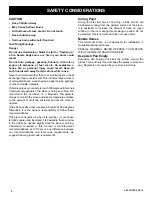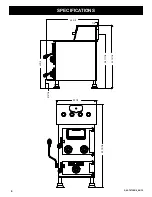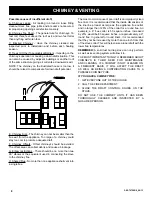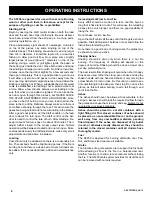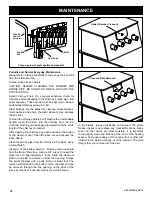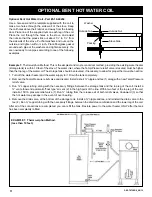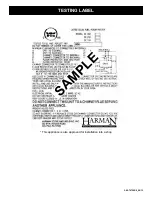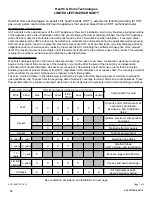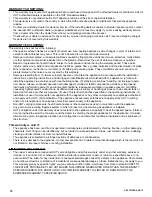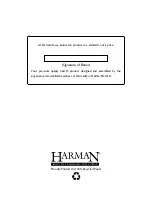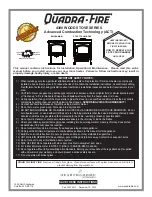
11
3-90-70738R9_08/13
Example 1:
Thermo-siphon Method. This is the simplest and most economical method, providing the existing water heater
(storage tank) is within 10 feet of the stove. The water inlet, where the Temp/Pressure relief valve is located, must be higher
than the top leg of the water coil. The storage tank should be elevated, if necessary, to allow for proper thermo-siphon action.
1. Turn off the water heater and the water supply to it. Drain the tank completely.
2. Remove the Temp/Pressure relief valve and discard. Install a short ¾” nipple and tee (1) along with a new Temp/Pressure
relief valve.
3. Run ¾” copper tubing, along with the necessary fittings, between the storage tank and the top leg of the coil. Install a
¾” vent elbow and automatic “float type” air vent (2) in the high point of the line. Within two feet of the top leg of the coil,
install a 150 lb. pressure relief valve (7). Run ¾” tubing from the release exit of both relief valves, downward (3) so that
the hot water may escape in the event of over-heating.
4. Remove the drain valve, at the bottom of the storage tank. Install a ¾” nipple and tee, and reinstall the drain valve to the
tee (4). Run ¾” copper tubing, with the necessary fittings, between the drain/tee combination and the lower leg of the coil.
After all of the connections are completed, you can refill the tank. Restore power to the water heater ONLY after the tank
has been completely refilled.
OPTIONAl bENT hOT wATEr COIl
Optional bent hot water Coil - Part #3-10-49202
Use a hole saw and the template supplied with the coil to
make two holes through the side wall of the stove. Keep
the coil holes above the firebrick and away from the loading
door. Place one of the supplied nuts on each leg of the coil.
Place the coil through the holes in the stove, and adjust
the nuts so that the pipes stick out about 1¼” to 1½” from
the sidewall of the stove. Put flat washers and nuts on the
outside, and tighten within ¼ inch. Place fiberglass gasket
around each pipe at the washers and tighten securely. You
are now ready to run pipes according to one of the following
examples.
EXAmPlE 1: Thermo-siphon method.
(less than 10 feet.)
Outside Nut
Washer
Outside Nut
Packing
Stove Side
Содержание SF 250
Страница 4: ...4 3 90 70738R9_08 13 7 8 35 3 4 5 13 16 32 5 8 36 11 16 42 15 16 20 1 2 42 15 16 Specifications...
Страница 13: ...3 90 70738R9_08 13 testing label This appliance is also approved for installation into a shop S A M P L E...
Страница 16: ...16 3 90 70738R9_08 13 Date Of Service Performed By Description Of Service Service Maintenance Log...
Страница 17: ...17 3 90 70738R9_08 13 notes...



